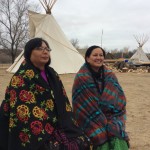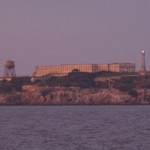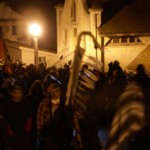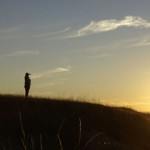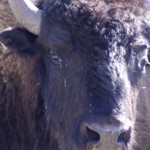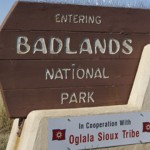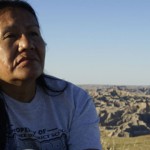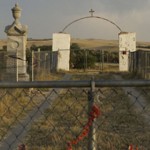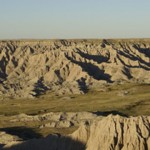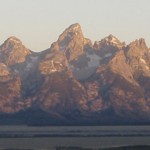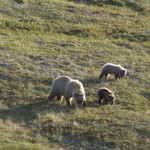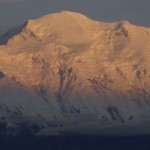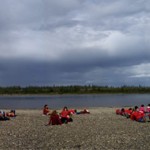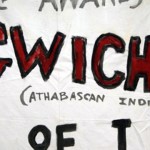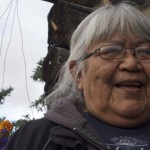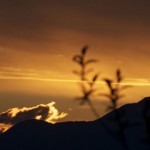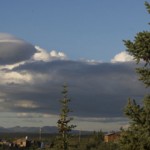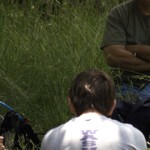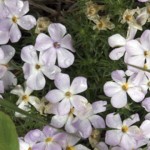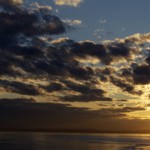Golden Gate National Recreation Area: Alcatraz sunrise ceremony
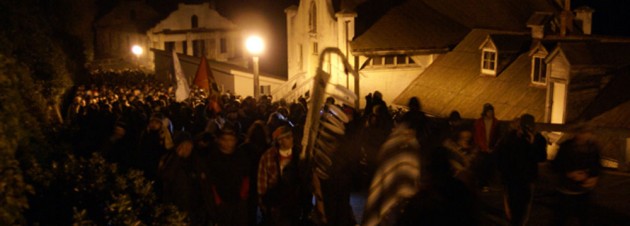
It has been 4 months since I left San Francisco Bay area where I call home. It felt really good to be back. I came back here to attend the annual sunrise gathering on Alcatraz Island in San Francisco Bay on Monday, October 11th, to commemorate Indigenous Peoples’ Day.
Alcatraz Island has a significant meaning to many American Indians as well as indigenous people around the world. In 1969, a group of Native American students occupied the island to demanded reparation for the many treaties broken by the US government and for the lands which were taken from so many tribes. Later, other Native American activists from around the country joined this effort and fought for justice. They inspired other indigenous people around the world to stand up for their rights.
At 4:45 am, I arrived at Pier 33 and joined the crowd – Native Americans and their allies. We had a short ferry ride to the island. As we were getting off the boat, Andrea Carmen, the executive director of International Indian Treaty Council greeted us. Then, we were led up to a place where they had a fire. We made a big circle around the fire and the ceremony began.
The ceremony was very powerful and emotional for me. It was powerful because I saw the depth of American Indians’ connection to the island and how they are still fighting today to bring justice to their people. It was emotional because the ceremony brought up so many feelings that I have accumulated in last four months.
In the ceremony, we had a musician who played a song, which was dedicated to one of the Native American leaders who became ill recently. He told us to also think about those who need to heal. As he played the beautiful song, I started to see the faces of all the women who have touched my life on this journey. Many women have worked through their anger and resentment, turning that energy into love and peace to heal themselves and to make this world better for American Indians and those who are oppressed. They are and will be on the path of healing as long as injustice exists in our society.
I realized that I, too, need to grieve and heal from my own experiences I had during the late 4 months. I didn’t just show up to write a story about these women. I became a friend with many of them. I lived with them. I ate meals with them. I witnessed not only beauty but also hard reality these women have to face. Their reality was a blend of humor and anger, joy and grief, hope and despair, courage and fear, and so on. I learned the history and the present lives of Native Americans – not from a book or news paper but through the eyes of American Indian women. I was buried so deep into the lives of these women that I had no energy to do anything else but to learn, feel and face the challenges that these women had to deal with: poverty, domestic violence, alcoholism, resource exploitation and legalized genocide. And yet, they rise above all these challenges and make a difference in our world. That is why their stories are so incredibly powerful and inspirational. So, how could I listen to these stories and not my emotion being affected by it at all? That’s impossible. I am a descent human being. But I have to take care of my mind and heart if I want to continue my project. How do I do that? How do I grieve and heal?
Last weekend at Bioneers conference, my friend Faith Gemmil, a Gwich’in activist from Alaska, said that she always make sure to go home and go back to her land after her intense activist work. She said that the land always heals her and rejuvenates her soul so that she can continue to go back to her activist work. When she shared her wisdom, it all became clear. No wonder why it felt so good when I breathed the salty moist air and rode my bicycle. No wonder why I felt comforted seeing my friends and instantly felt rejuvenated when I went surfing, being held by our mother ocean. I am going to take her advice from now on.
